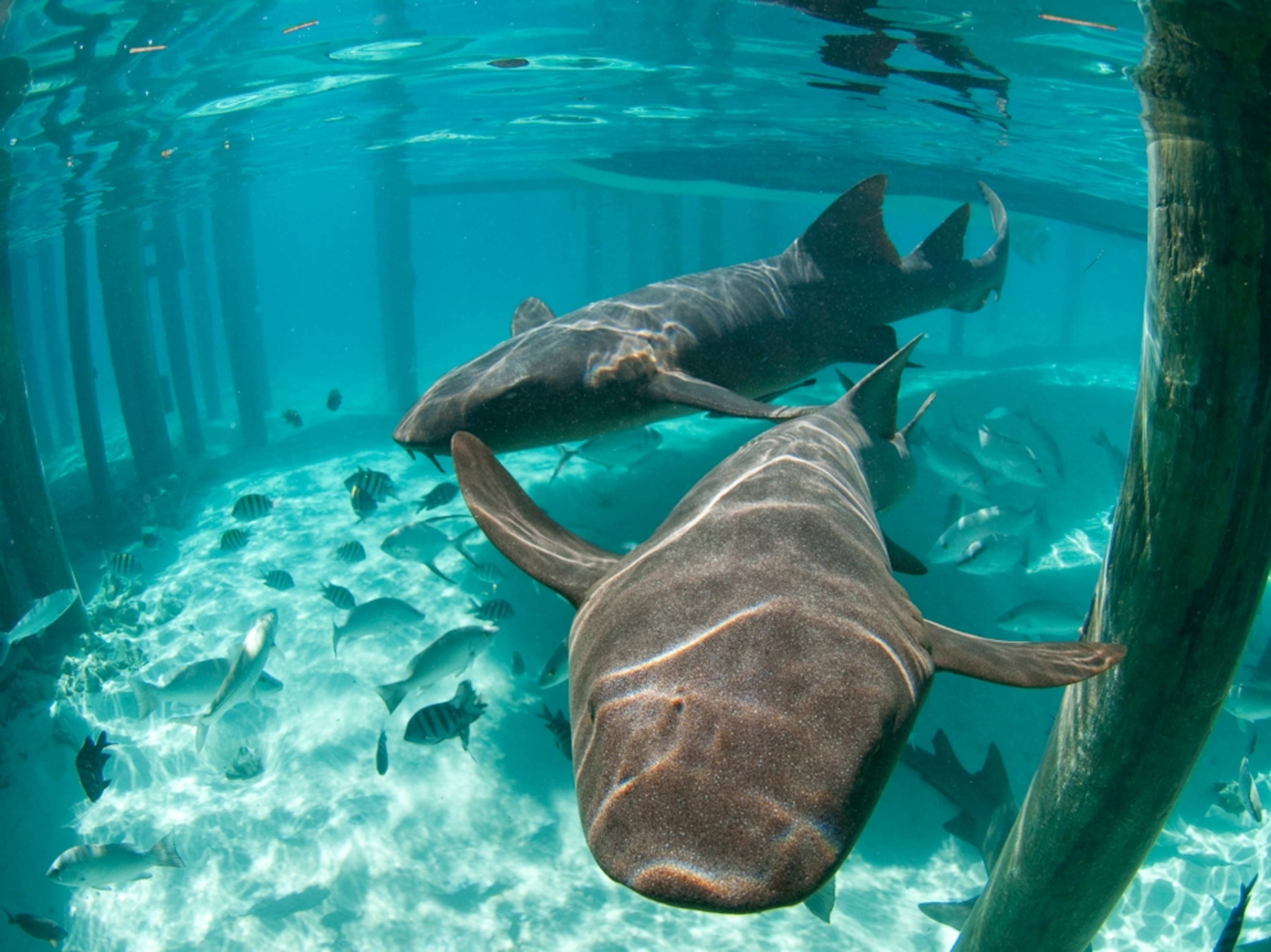
Last Great Hope for the Islands
Tales From the Frontier
From the November 2012 issue of National Geographic Traveler
It’s 1977 and I’m sitting by a smoldering fire of coconut husks on Pinney’s Beach in Nevis. A guy in dreadlocks named Bushes torches a spliff and invites me to “reason” with him. Our conversation roams from the mundane to the metaphysical until the pink glow of daybreak, when he turns prophetic: “Dem crazy bald heads pollute di Earth ’til what future we gonna have?”
Pretty potent stuff for an idealistic marine biology intern with the Island Resources Foundation. This conservation group was among the first to conduct an environmental survey of the islands and publicize the growing damage to the region’s fragile marine habitats.
Some three decades later, government inaction and the tourism industry’s unchecked sun-and-fun mentality make 1977 look like the good old days. Seventy-five percent of the Caribbean’s reefs are threatened, more than any other marine region on the planet except for Asia’s Coral Triangle, according to the World Resources Institute. And nearly three quarters of beaches are eroding away, the result of relentless development of coastal areas, including clear-cutting mangrove forests and dredging up sea grass beds. Coral reefs have also been ripped out to create larger cruise ship ports to accommodate the new breed of giant ocean liners that carry up to 8,700 passengers and crew. It’s not just the beaches and reefs disappearing but fish, too, their spawning sites collapsing from pollution, habitat destruction, and overfishing. It’s enough to make a tropical island lover swig a bottle of rum in despair.
But it may not be time to drown in drink just yet. With tourism in the Caribbean generating roughly $20 billion in annual revenues and supporting two million jobs—employing one out of eight people (the Caribbean is the world’s most tourism-dependent region)—local government leaders are finally making the connection between a healthy environment and those postcard-pretty island images. In what could be the most ambitious marine conservation effort ever undertaken, ten governments have formed the Caribbean Challenge Initiative. The goal is to conserve at least 20 percent of each island’s marine and coastal habitat—an unprecedented target that would nearly triple the Caribbean’s marine protected areas to some 20 million acres.
“The tourism economy of our region relies to a great extent on protecting our natural heritage. The success of the Caribbean Challenge Initiative speaks to the very survival of the Caribbean as a travel destination and the prosperity of our people,” says Prime Minister Tillman Thomas of Grenada, where three new marine national parks were recently created.
Other island governments are also putting their words into action: Since the initiative was unveiled in 2008, the Bahamas has set aside 1.2 million acres of unspoiled coast—one of the region’s last true wildernesses—as the Andros Westside National Park. St. Kitts and Nevis has completed an integrated marine conservation zoning plan, and Jamaica has declared ten fish sanctuaries.
In a major conservation move, the Dominican Republic—one of the Caribbean’s most biodiverse countries—created 32 new protected areas, safeguarding 2.7 million acres of marine habitat, including coral reefs and meadows of sea grass that are home to endangered species such as manatees and sea turtles.
“If these island nations can pull off protecting a full 20 percent of their marine ecosystems, the Caribbean will show the world that even small nations can deliver huge conservation results and provide a model that other islands can learn from,” says John Myers, deputy director for the Caribbean Program at the Nature Conservancy, which is providing technical assistance.
- National Geographic Expeditions
The task will not be easy. Despite some impressive strides, much more still needs to be done. Next spring, the prime ministers of Grenada and British Virgin Islands will join sustainability advocate and Virgin CEO Richard Branson in cohosting other Caribbean government leaders, business representatives, and marine conservationists at Branson's private retreat in the British Virgin Islands. Together they will wrestle with some of the most intractable challenges. On the agenda: Raise money to finance the project (at least $50 million is needed), get the support of the tourism sector—including businesses that have long benefited from lax environmental regulations (think cruise ships and megaresorts)—and encourage other Caribbean governments to sign on. (Where are you, Guadeloupe and Martinique? And what about you, Barbados?)
The good news is that it’s not too late for the Caribbean. As local governments and concerned groups grapple with setting policy, what can reef-snorkeling, sun-basking travelers do? We can reward the islands that are trying to do the right thing by snorkeling, basking, and spending money on their shores: Antigua and Barbuda, the Bahamas, the Caymans, Dominican Republic, Grenada, Jamaica, Puerto Rico, St. Lucia, St. Kitts and Nevis, and St. Vincent and the Grenadines. Bushes, from Nevis, would call that “good reasoning.”





